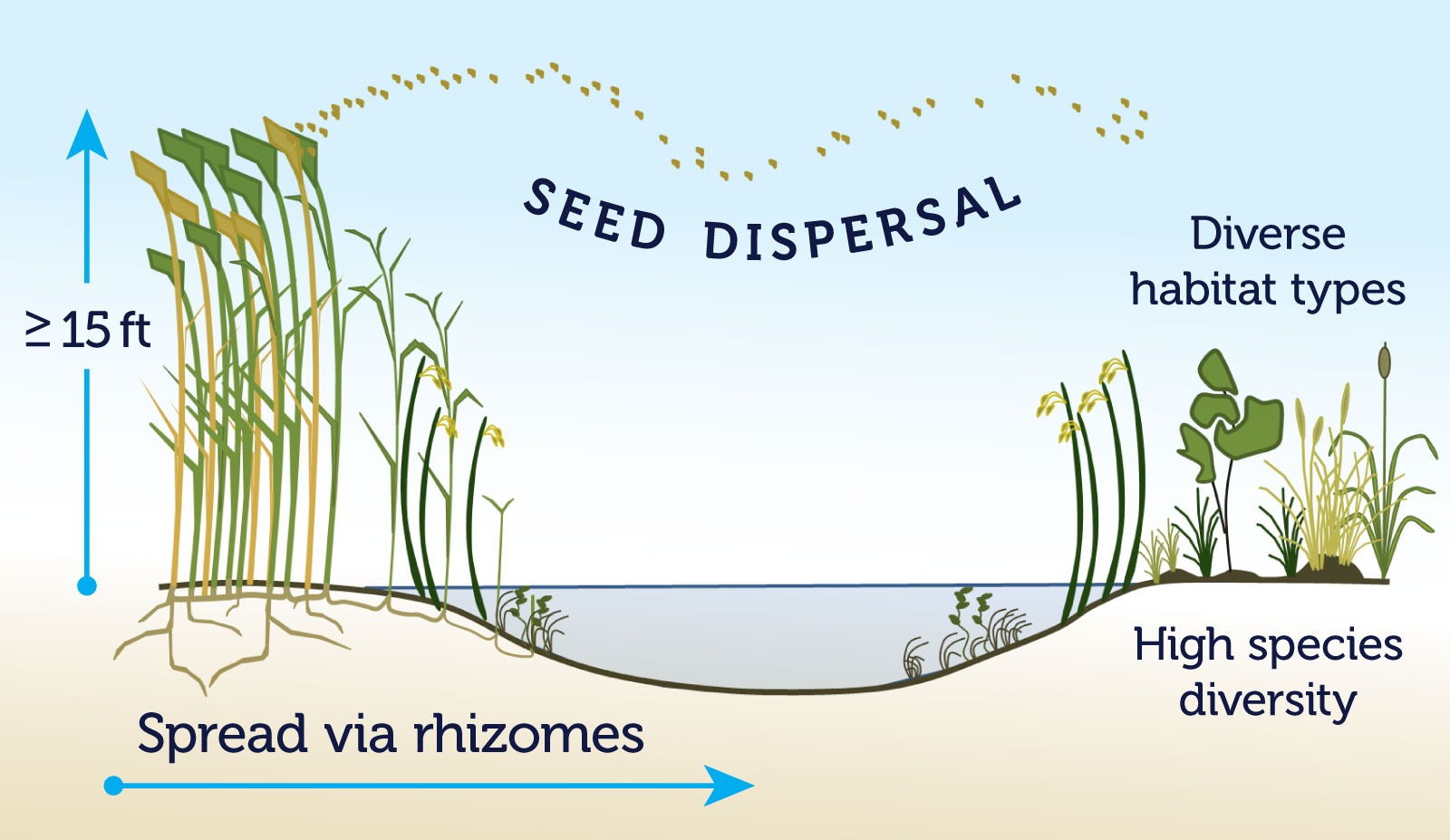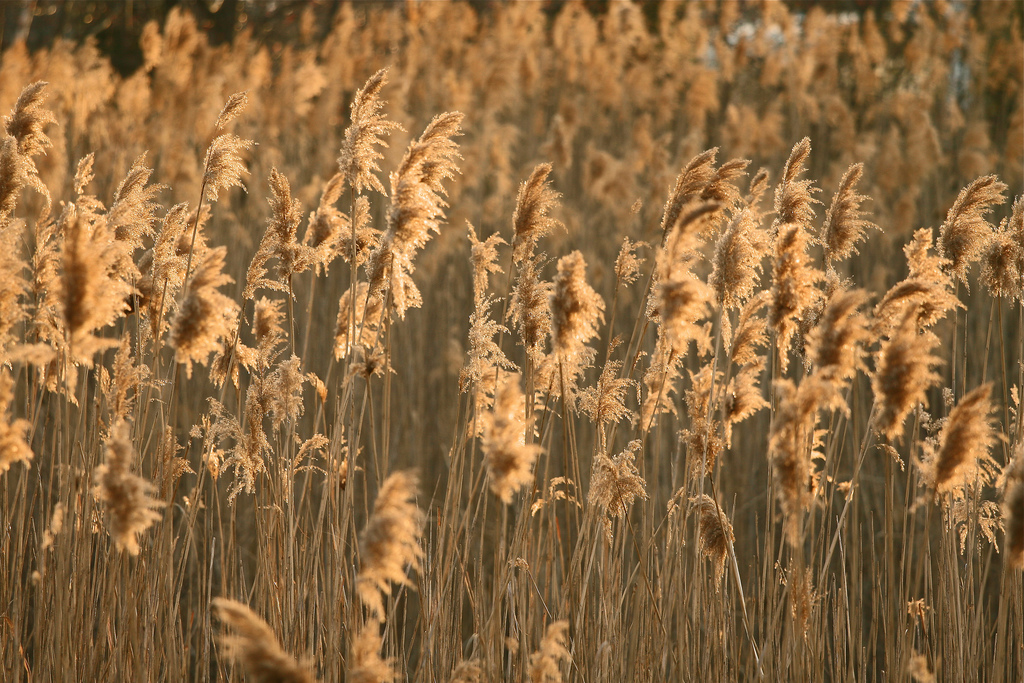MENU:
Factors That Contribute to the Spread of Phragmites
Phragmites, or common reed, colonizes new areas and spreads within an area using several reproductive strategies:
- Phragmites produces up to 2,000 seeds per seed head per year. While seed viability is variable, recent research has revealed that Phragmites spreads to new areas predominantly through seed dispersal.
- Stolons are stems that are connected to the parent plant that grow along the soil surface and can form roots and shoots. They allow Phragmites to expand around an area where the plant is already established.
- Rhizomes are underground stems connected to the parent plant that are capable of growing roots and shoots. They allow Phragmites to expand around an area where the plant is already established.
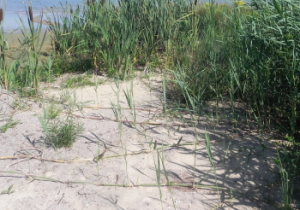
Stolons spreading along the ground. Photo credit: Michigan Natural Features Inventory
While the predominant form of spread to new areas is via seed dispersal, Phragmites can also spread to new areas when pieces of rhizomes or stolons are broken off of a parent plant and moved to a new location where they can root. This can happen due to natural forces such as wind or flood waters. Dispersal can also occur because humans move them purposefully or by accident, such as on construction equipment that was not properly cleaned.
Once a patch of Phragmites is established, it can form dense stands and spread rapidly to adjacent areas via rhizomes or stolons. Studies have shown that the lateral spread of rhizomes averages approximately 15.7 in (39.8 cm) per year, and stolons can grow up to 4.25 in (10.7 cm) in a day.
What other factors contribute to the spread of non-native Phragmites?
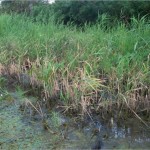
Lowered water levels
The spread of non-native Phragmites into a wetland is often limited by water depth. However, it can spread rapidly into newly exposed areas when water levels drop. Once established in an area, non-native Phragmites can persist in water up to 6 ft (1.8 m) deep.
-
- Whyte, R. S., D. Trexel-Kroll, D. M. Klarer, R. Shields and D. A. Franko. 2008. The invasion and spread of Phragmites australis during a period of low water in a Lake Erie coastal wetland. Journal of Coastal Research, Special issue 55: 111-120. Abstract
- Tulbure, M. G., C. A. Johnston and D. L. Auger. 2007. Rapid invasion of a Great Lakes coastal wetland by non-native Phragmites australis and Typha. Journal of Great Lakes Research, 33 (Special Issue 3): 269-279. Abstract
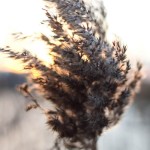
Genetics
Studies show that Phragmites seeds are more likely to be viable if flowers are cross pollinated. This means that, as there are more stands of Phragmites, and genetic diversity in an area increases, the seed viability is also likely to increase. This, in turn, can increase the number of stands of Phragmites.
- Kettenring, K. M., M. K. McCormick, H. M. Baron and D. F. Whigham. 2011. Mechanisms of Phragmites australis invasion: feedbacks among genetic diversity, nutrients, and sexual reproduction. Journal of Applied Ecology, 48(5): 1305-1313. Abstract
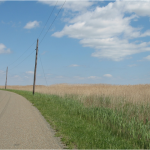
Roads
Roads have been identified as important pathways for non-native Phragmites invasion. They increase landscape connectivity, facilitating the transport of seeds and plant fragments from invaded wetlands to non-invaded wetlands. Roadsides are harsh environments that are frequently disturbed and have high inputs of salts and contaminants, all of which favors the establishment of disturbances-adapted species such as non-native Phragmites.
- Brisson, J., S. de Blois and C. Lavoie. 2010. Roadside as invasion pathway for common Reed (Phragmites australis). Invasive Plant Science and Management, 3(4):506-514. Abstract (Visit the Phragmites research group website to request a reprint)
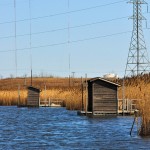
Anthropogenic forces
Human-induced disturbances to natural wetlands, such as shoreline development, the creation of canals or drainage ditches, or recreational vehicle use in sensitive habitats, may promote non-native Phragmites invasion. These disturbances leave open spaces that are free of competitors and can easily be colonized by non-native Phragmites and may help transport seeds or plant parts between areas. Additionally, nutrient enrichment of wetlands, through agricultural run-off or lawn fertilization, enables non-native Phragmites to produce more biomass and denser colonies. Humans have also helped spread non-native Phragmites by planting them in gardens, or harvesting them for decorative displays or hunting blinds.
- Minchinton, T. E. and M. D. Bertness. 2003. Disturbances-mediated competition and the spread of Phragmites australis in a coastal marsh. Ecological Applications, 13(5): 1400-1416. Abstract
- Albert, A., J. Brisson, F. Belzile, J. Turgeon and C. Lavoie. 2015. Strategies for a successful plant invasion: the reproduction of Phragmites australis in northeastern North America. Journal of Ecology. doi: 10.1111/1365-2745.12473. Abstract
- Belzile, F., J. Labbe, M.-C. LeBlanc and C. Lavoie. 2010. Seeds contribute strongly to the spread of the invasive genotype of the common reed (Phragmites australis). Biological Invasions, 12(7): 2243-2250. Abstract (Visit the Phragmites research group website to resquest a reprint)
- Caplan, J. S., C. N. Wheaton and T. J. Mozdzer. 2014. Belowground advantages in construction cost facilitate a cryptic plant invasion. AoB Plants, 6: plu020. Full paper
- Kettenring, K. M., M. K. McCormick, H. M. Baron and D. F. Whigham. 2010. Phragmites australis (Common reed) invasion in the Rhode River subestuary of the Chesapeake Bay: disentangling the effects of foliar nutrients, genetic diversity,patch size and seed viability. Estuaries and Coasts, 33(1): 118-126. Abstract (Visit Dr. Kettenring webpage to request a reprint)
- Kettenring, K. M. and K. E. Mock. 2012. Genetic diversity, reproductive mode, and dispersal differ between the cryptic invader, Phragmites australis, and its native conspecific. Biological Invasion, 14(12): 2489-2504. Abstract (Visit Dr. Kettering webpage to request a reprint)

